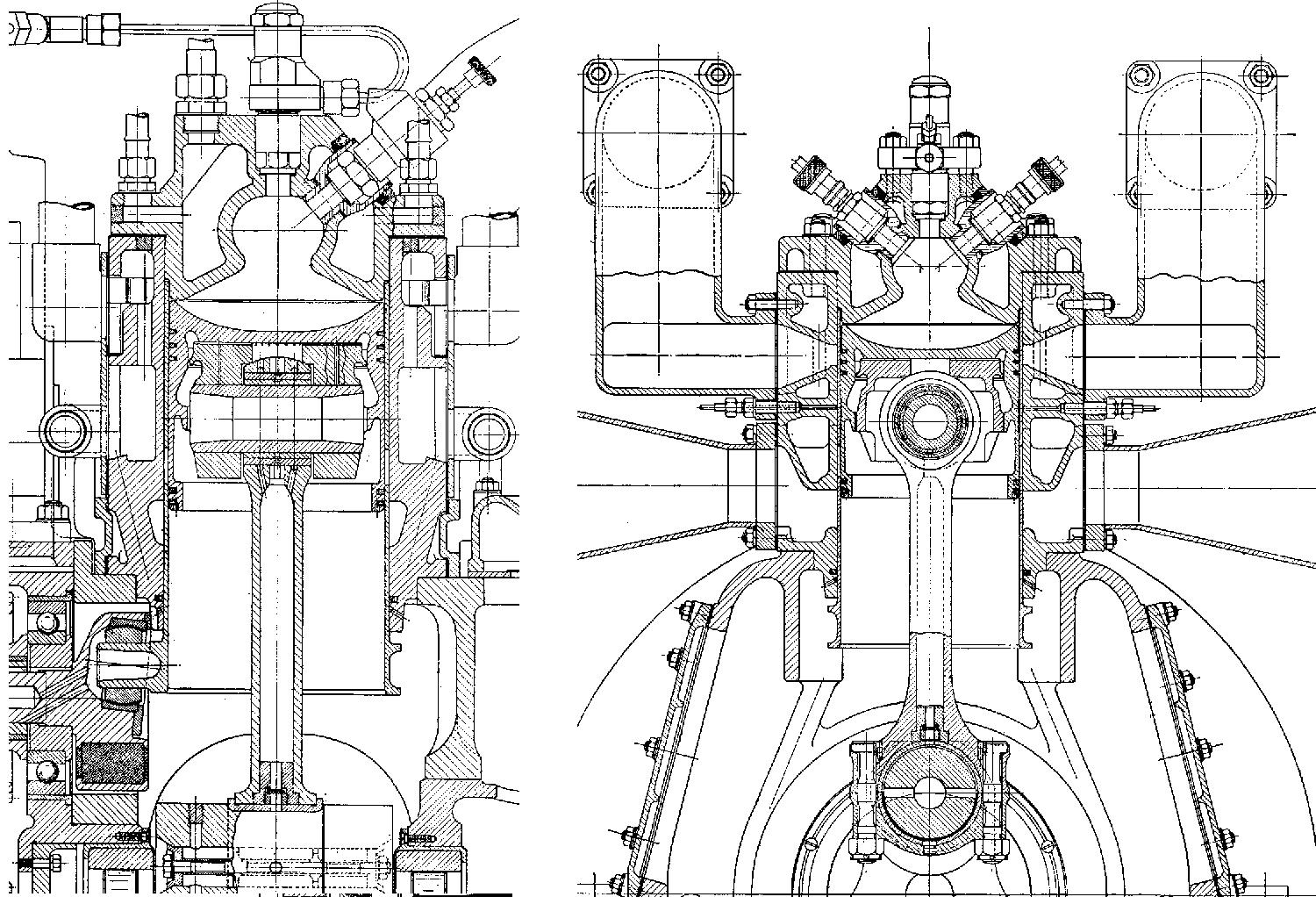 |
enginehistory.org
Aircraft Engine Historical Society Members' Bulletin Board
|
| View previous topic :: View next topic |
| Author |
Message |
szielinski

Joined: 13 Jul 2003
Posts: 94
Location: Canberra, Australia
|
 Posted: Wed Oct 06, 2004 20:31 Post subject: Crecy sleeve intrusion (?) length. Posted: Wed Oct 06, 2004 20:31 Post subject: Crecy sleeve intrusion (?) length. |
 |
|
I'm trying to ascertain how far the sleeve in the Crecy went "behind" the head.
From diagrams I have seen, it doesn't seem to go above the actual barrel, and the head intrudes into the barrel with enough clearance for the sleeve to fit between. Logic also suggests that the sleeve doesn't press up against the end of the gap against the head (carbon build-up & thermal expansion would seem to be reasons against this).
The thing with the Crecy is that is is open-ended, and thermal expansion seals the sleeve against the barrel.
I would like to know either what ratio of the sleeve travel is required to be "behind" the head casting or how much surface area is required to seal the combustion gases in the cylinder (or did they just put up with blow-by).
The reason I am asking is that I am wondering if the portion behind the head can be a profile other than a plain circumference.
P.S. Yes, I have the RRHT book on the Crecy and can't find the info there. |
|
| Back to top |
|
 |
kmccutcheon

Joined: 13 Jul 2003
Posts: 299
Location: Huntsville, Alabama USA
|
 Posted: Wed Oct 06, 2004 21:48 Post subject: Posted: Wed Oct 06, 2004 21:48 Post subject: |
 |
|
| Quote: | | I'm trying to ascertain how far the sleeve in the Crecy went "behind" the head. |
I believe the answer to your question is in the Crecy book, but it is hard to tell it is there. The drawing below allows one to see details not obvious from the drawings on pages 27 and 28 of the Crecy book. If one knows that the bore of this engine was 4.81”, then it is possible make a fairly accurate guess as to how far the sleeve was buried.
It also helps to know (from page 360 of The High Speed Internal Combustion Engine, 1953 edition) that Ricardo initially had trouble with the head rings gumming up:
“To this end a new cylinder, cylinder head, and sleeve were constructed. In this the thickness of the steel sleeve was 0.125” but at the upper end, beyond the travel of the piston, the bore of the sleeve was enlarged and tapered out to a knife-edge in order to form, in effect, an obturator ring; the intention being that it would expand under pressure to form a gas-tight seal. This proved surprisingly successful and, for the first time, it became possible to carry out a 50-hour full-load endurance test, and that without any depreciation in performance, while inspection of the sleeve after such a test showed perfect bearing and a high polish over a length of about 0.5” downwards from the top of the sleeve. Later, however, it was found that the thinned-down top was far too fragile and that, even with the greatest care in handling, was liable to be damaged when assembling the sleeve and cylinder, and once dented or distorted it would fail to seal and would burn away. Other sleeves were tried with the thinning-down reduced, with successful results, until eventually it was found, to the surprise of all concerned, that not only was there no need to thin the sleeve at all, but even quite a wide range of tolerance in the sleeve-to-cylinder fit had no ill effect except upon starting up from cold, and even this presented no insuperable difficulty if, before starting, a little thick lubricating oil was injected into the annular space immediately above the sleeve.
From simple arithmetic it was obvious that the gas pressure alone could not inflate the sleeve sufficiently to take up all the clearance and ensure a gas-tight seal. It appeared therefore that the necessary inflation was brought about by thermal expansion rather than pressure… Further experiments revealed that the working clearance could be increase to as much as 0.008” to 0.010” in diameter before the sleeve failed to seal. … It appeared that the top end of the sleeve expanded out to a trumpet shape, until all clearance was taken up, when heat transfer to the cylinder wall then stabilized the temperature conditions; since the heat capacity of the sleeve was extremely small and the intensity of the heat flow, more especially while leakage was taking place, very great, stabilized conditions were reached after only a few cycles.”

_________________
Kimble D. McCutcheon |
|
| Back to top |
|
 |
szielinski

Joined: 13 Jul 2003
Posts: 94
Location: Canberra, Australia
|
 Posted: Wed Oct 06, 2004 22:40 Post subject: Posted: Wed Oct 06, 2004 22:40 Post subject: |
 |
|
Thanks, that does help, the resolution is obviously much better than the book I have.
It appears that the greater the length of extension where thermal expansion occurs, the greater sealing capabilities.
I suppose the head "intrusion" also shields the end of the sleeve from heat to some extent, stabilising it's dimensions.
Thanks once again, you guys kick ass for detail and response time(s) ! |
|
| Back to top |
|
 |
|
|
You cannot post new topics in this forum
You cannot reply to topics in this forum
You cannot edit your posts in this forum
You cannot delete your posts in this forum
You cannot vote in polls in this forum
|
Powered by phpBB © 2001, 2005 phpBB Group
|



